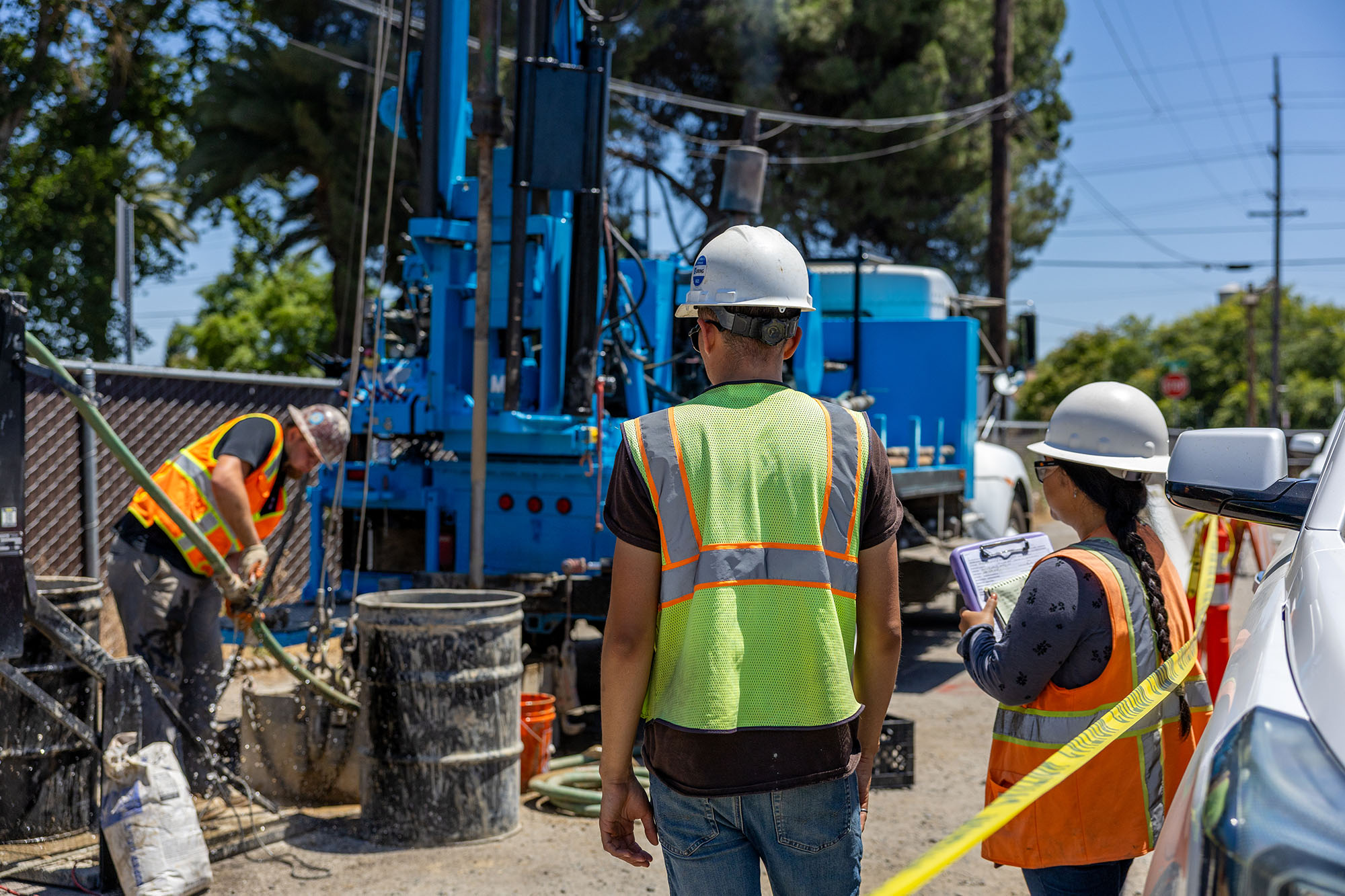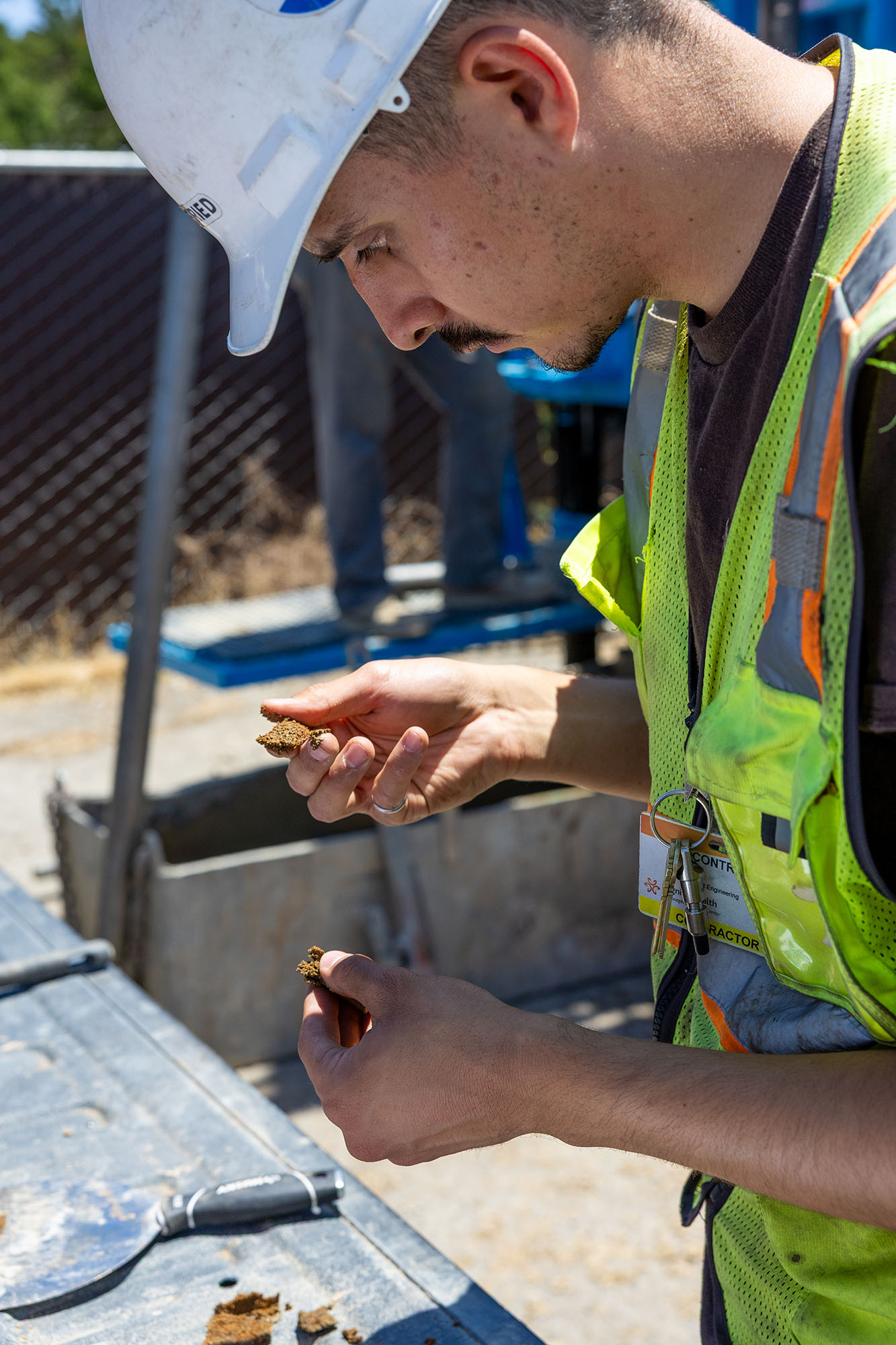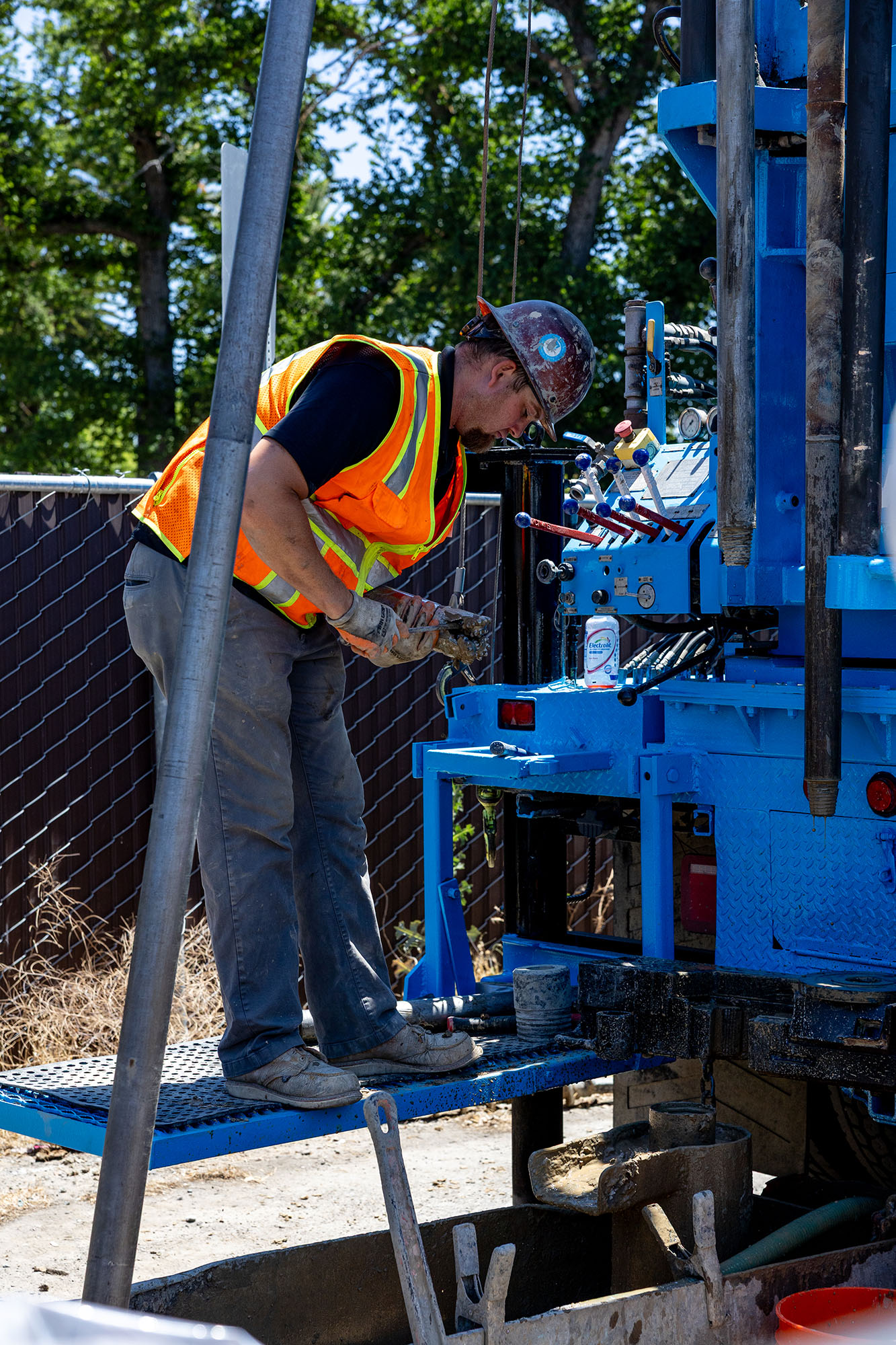
Geotechnical Investigation at
St. Joseph’s Medical Facility — Part 1
Soil Sampling and Borings
Our Geotechnical Department recently supported the expansion of St. Joseph’s Medical Facility by performing a geotechnical investigation for a future structure on one of the site’s parking lots. This work focused on soil sampling through drilled borings, which provided subsurface information essential for the project’s foundation design.
Our field team used a CME 75 drill rig with solid flight and mud rotary drilling techniques to advance boreholes to depths of approximately 25 and 50 feet below the ground surface. A 140-pound hammer was raised 30 inches and allowed to freefall to drive the split barrel sampler into the ground. The number of blows to advance the sampler 18 inches was recorded; the number of blows to penetrate the sampler the final 12 inches is known as the “N-Value”. The “N-value” is useful to correlate the strength of the soil. These methods allowed us to collect representative soil samples from different subsurface layers that can be used for index or strength testing as well as correlations to engineering parameters used in design. For softer soils, other sampling methods such as Shelby tubes are used to collect less disturbed samples.
Once the samples were retrieved, they were delivered to our geotechnical laboratory for further evaluation. Key parameters assessed included:
- Index Properties – moisture content, density, and plasticity/expansion characteristics
- Shear strength – to determine the soil’s strength through unconfined compressive strength
- Consolidation characteristics – to measure how soil compresses under weight and to evaluate the “history” of the soil specimen
The data collected in this initial phase provided the foundation for the next steps in the investigation, ensuring that subsequent analyses and designs were based on accurate and comprehensive subsurface information.
Stay tuned for Part 2, where we will explore the geophysical testing methods by ReMi to directly measure the shear wave velocity used for Site Classification.
Watch our video below to see the work in action!



